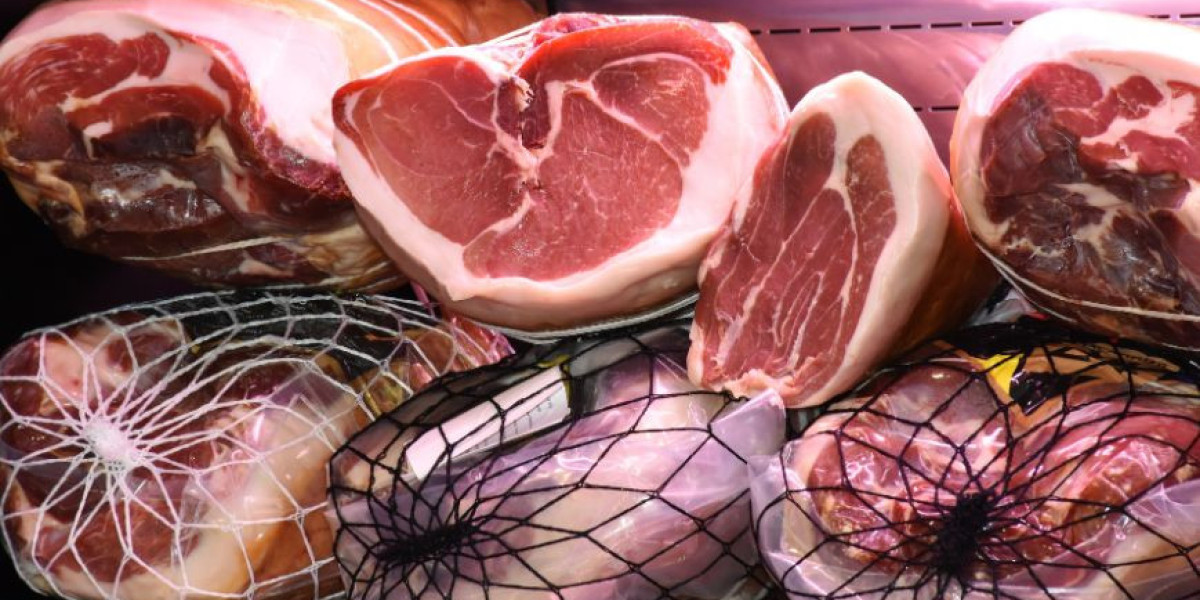The Australia edible meat market, valued at AUD 6.35 billion in 2024, has experienced significant growth, driven by the increasing acceptance of packaged food products among millennials. The market is expected to expand at a compound annual growth rate (CAGR) of 1.65% from 2025 to 2034, potentially reaching AUD 7.48 billion by 2034, as meat producers increasingly embrace sustainable farming practices with a focus on environmental responsibility. As consumer preferences evolve and the demand for meat products continues to grow, the Australian edible meat market is poised for steady expansion, driven by trends in convenience, sustainability, and shifting dietary preferences. In this article, we delve into the factors propelling the market’s growth, emerging trends, and the challenges ahead for the industry.
Key Drivers of Market Growth
Rising Demand for Convenience and Packaged Foods: The increasing popularity of packaged food products, particularly among millennials, has played a crucial role in driving growth in the Australian edible meat market. As busy lifestyles become more common, consumers are seeking convenient meal options that require less preparation time. Ready-to-eat meat products, including pre-cooked meals, packaged deli meats, and frozen meat, offer convenience without compromising on taste or nutrition, contributing to the expansion of the market.
Health Consciousness and Lean Meat Preferences: Australians are becoming more health-conscious, and this trend is influencing their meat consumption habits. There is a growing preference for leaner cuts of meat such as chicken, turkey, and lean cuts of beef, which are perceived as healthier alternatives to higher-fat meats. The rise in health awareness has also prompted the introduction of meat products that are low in sodium and preservatives, further expanding the market for health-oriented consumers.
Sustainability and Ethical Sourcing: Sustainable farming practices are becoming increasingly important to consumers, and the edible meat market in Australia is seeing a shift toward more environmentally responsible production methods. Consumers are demanding meat products that are sourced from farms committed to ethical and sustainable practices. This includes using natural feed, reducing carbon emissions, and implementing humane animal welfare standards. As a result, many meat producers in Australia are adopting sustainability-focused initiatives to cater to this growing demand.
Growing Popularity of Plant-Based Alternatives: The rise of plant-based and meat-alternative products is a trend that is reshaping the global food industry, including in Australia. While plant-based alternatives like Beyond Meat and Impossible Foods continue to gain traction, many traditional meat producers are diversifying their product offerings by incorporating plant-based options alongside traditional meats. This shift in consumer preference for flexible, mixed-protein diets is providing an opportunity for growth in both the meat and plant-based sectors, benefiting the overall edible meat market.
Exports and Global Demand for Australian Meat: Australia is a significant player in the global meat export market, particularly in the export of beef, lamb, and mutton. The growing global demand for Australian meat, particularly from Asian markets, continues to fuel the domestic edible meat market. Australia's reputation for producing high-quality meat products, combined with its ability to supply to international markets, has bolstered the industry and provided further growth opportunities.
Key Segments in the Edible Meat Market
The Australian edible meat market is broad, with various segments catering to different consumer preferences and needs. Some of the key segments include:
Beef and Veal: Beef remains the largest segment in the Australian edible meat market, driven by strong domestic consumption and global exports. Australians enjoy beef in various forms, including steaks, mince, and sausages. Additionally, premium cuts and grass-fed beef are gaining popularity among health-conscious and sustainability-driven consumers.
Poultry (Chicken and Turkey): Poultry, especially chicken, is a popular choice in Australian households due to its affordability, versatility, and perceived health benefits. Chicken remains a key player in the market, with both fresh and processed products like chicken nuggets, wings, and pre-cooked meals being in high demand.
Lamb and Mutton: Lamb is a favorite meat in Australia, particularly during holidays and special occasions. The market for lamb and mutton products continues to grow due to their unique flavor and increasing popularity in gourmet cooking. Lamb exports to countries such as the Middle East and Asia also contribute to the market’s growth.
Processed Meat Products: Processed meat products, including sausages, deli meats, and bacon, are in high demand among Australian consumers who seek convenience. These products are often used in sandwiches, salads, and ready-to-eat meals, driving their popularity in the packaged food market. As health trends shift toward lower-fat and nitrate-free options, the processed meat sector is adapting by offering healthier alternatives.
Plant-Based and Meat Alternatives: Plant-based and alternative protein products, such as those made from soy, peas, and mushrooms, are increasingly finding their place in the Australian edible meat market. These products provide meat-like textures and flavors while catering to consumers who are reducing their meat consumption or following plant-based diets. This segment is expected to grow, driven by the rising awareness of sustainability and dietary preferences.
Emerging Trends in the Edible Meat Market
Sustainability and Eco-Friendly Meat Production: As consumers become more concerned about the environmental impact of food production, sustainable farming practices are increasingly being implemented within the edible meat industry. From reducing carbon footprints to employing regenerative agriculture practices, meat producers are focusing on environmental responsibility. This trend includes efforts such as the use of plant-based feed, water conservation, and the reduction of methane emissions from livestock.
Growth of Premium and Specialty Meat Products: Consumers are becoming more discerning about the quality of meat they consume, leading to increased demand for premium and specialty meat products. Grass-fed beef, organic meats, and free-range poultry are gaining popularity among Australians who are willing to pay a premium for higher-quality, ethically sourced meat. Additionally, exotic meats such as kangaroo, venison, and game meats are seeing growing interest in niche markets.
Online Meat Retailing and Delivery Services: The rise of e-commerce has extended to the edible meat market, with more consumers opting for online meat delivery services. Many Australians now prefer the convenience of purchasing fresh meat, gourmet cuts, and specialty items through online platforms. As delivery services and subscription-based meat boxes gain popularity, this trend is expected to continue shaping the future of the market.
Advances in Meat Technology: Innovations in meat processing technology, including lab-grown meat and cultured meat products, are expected to play an increasing role in the future of the edible meat market. While these products are still in the early stages of commercialization, they have the potential to reduce the environmental impact of meat production while providing a sustainable alternative to traditional farming.
Increased Focus on Animal Welfare: Consumers are placing more emphasis on the humane treatment of animals, driving meat producers to adopt higher welfare standards. Ethical sourcing and certifications such as free-range, cruelty-free, and humane treatment are influencing consumer purchasing decisions. Meat producers that prioritize animal welfare and transparency in their supply chains are likely to see increased loyalty from ethically conscious consumers.
Challenges in the Edible Meat Market
Price Volatility and Supply Chain Disruptions: The Australian meat industry is subject to price fluctuations due to factors such as feed costs, weather conditions, and global demand. Supply chain disruptions, including labor shortages, transportation issues, and trade barriers, can also impact the availability and cost of meat products. These challenges can affect the stability of the market and the profitability of producers.
Health and Environmental Concerns: While meat consumption remains popular in Australia, there is growing concern over the health implications of excessive red meat intake, particularly in relation to heart disease, cancer, and obesity. Additionally, the environmental impact of livestock farming, including greenhouse gas emissions and deforestation, is a challenge that the meat industry must address in order to meet the expectations of environmentally conscious consumers.
Competition from Plant-Based Alternatives: As plant-based meat alternatives gain market share, traditional meat producers face increased competition. The rising popularity of plant-based options, driven by health, ethical, and environmental concerns, poses a significant challenge to the edible meat market. Meat producers will need to diversify their product offerings and adapt to changing consumer preferences in order to stay competitive.
Conclusion
The Australian edible meat market is on a steady growth trajectory, with a projected CAGR of 1.65% from 2025 to 2034. Key drivers such as the increasing demand for convenience, sustainable farming practices, and the rise of health-conscious consumers are shaping the future of the market. While challenges like price volatility, supply chain disruptions, and the rise of plant-based alternatives persist, the industry is adapting by embracing innovation, sustainability, and evolving consumer preferences.
As the market grows, Australian meat producers are focusing on premium, ethically sourced, and environmentally responsible products to meet the expectations of a more discerning consumer base. With continued innovation, sustainability efforts, and a focus on consumer health and convenience, the Australian edible meat market is set to thrive in the years to come.








